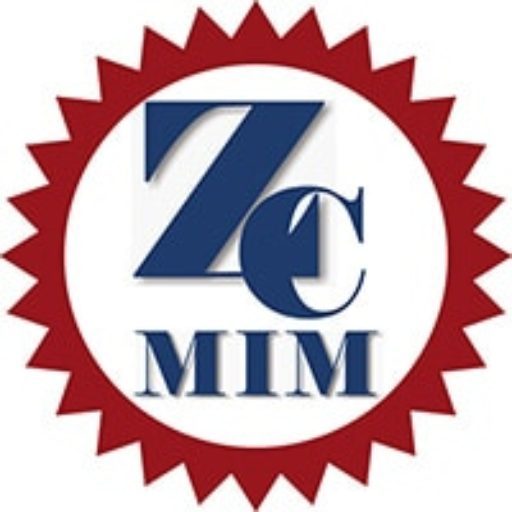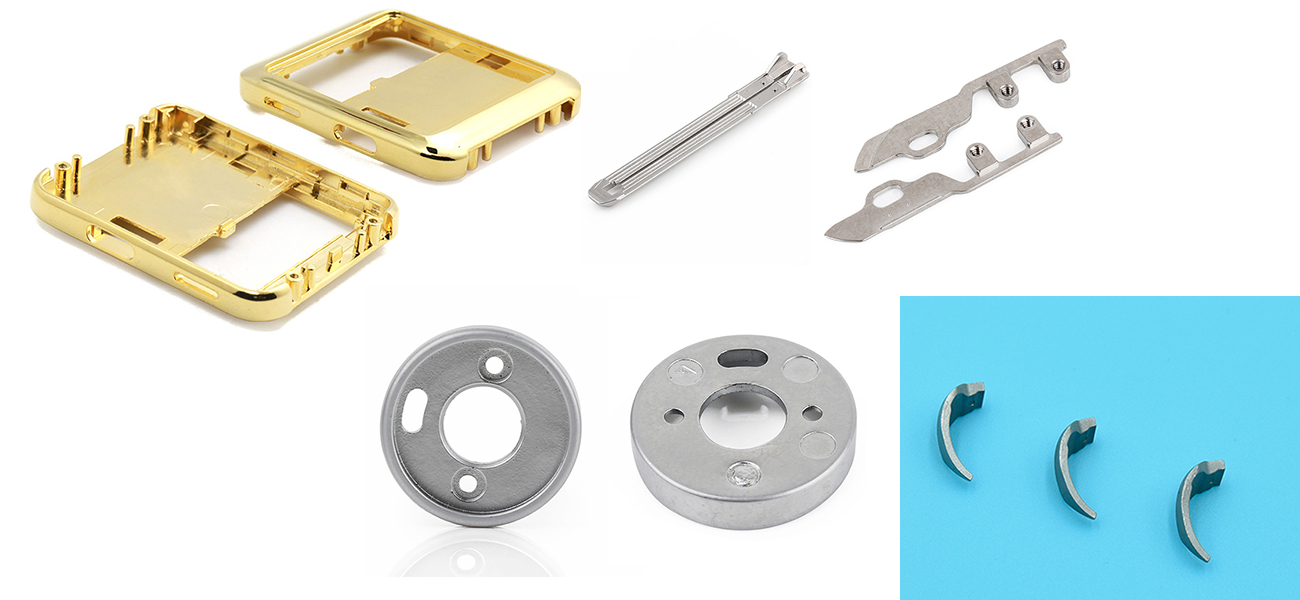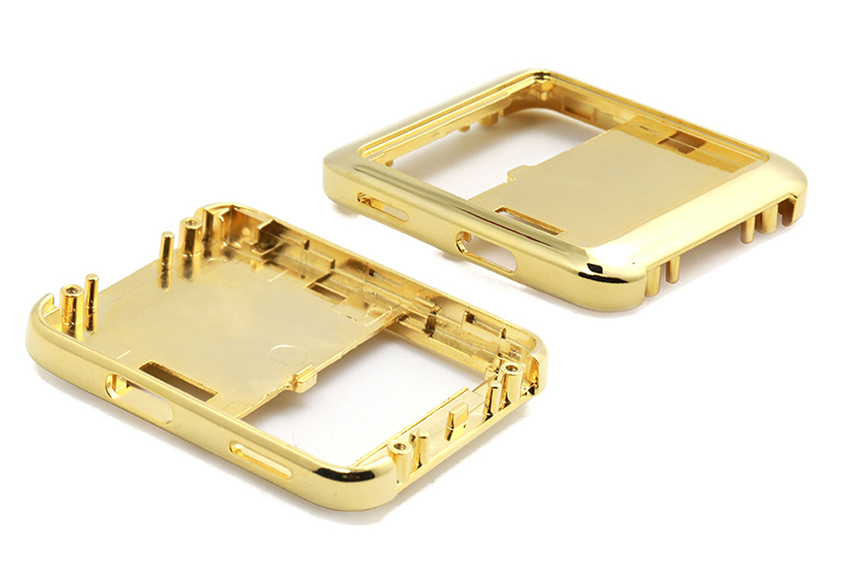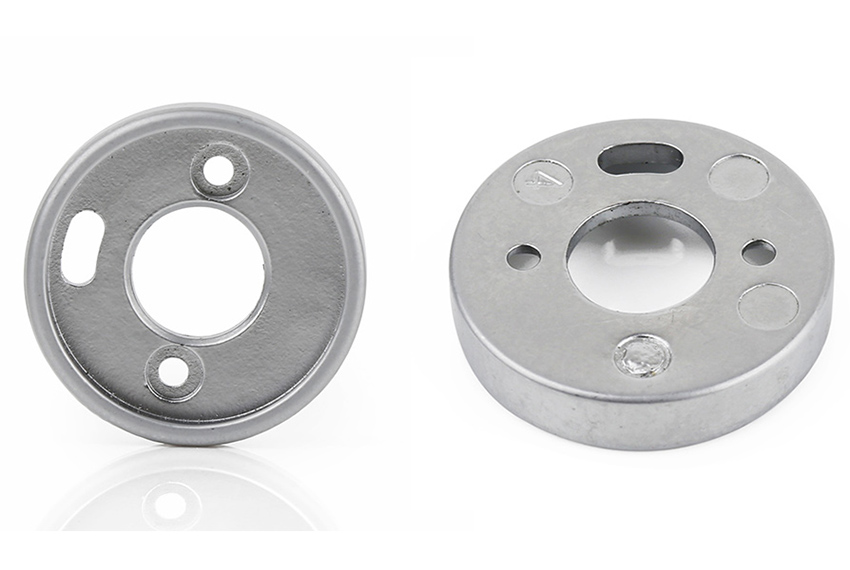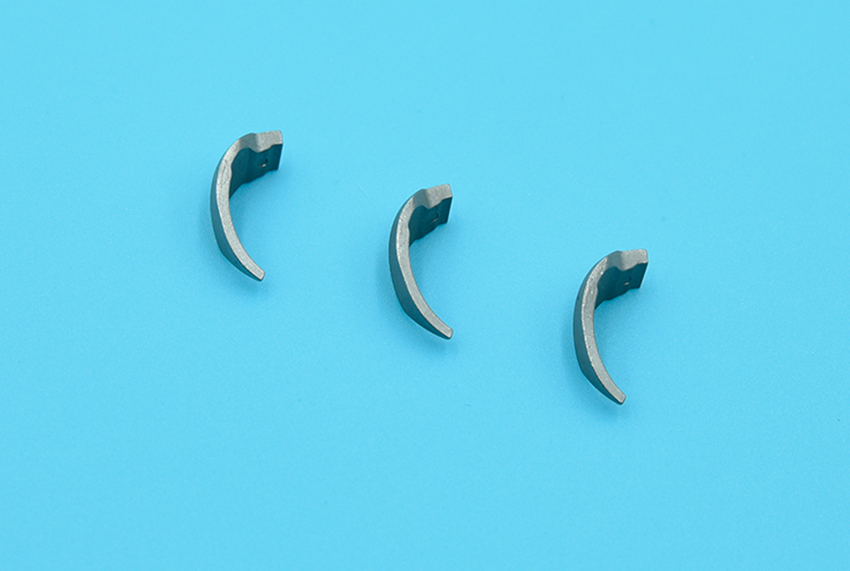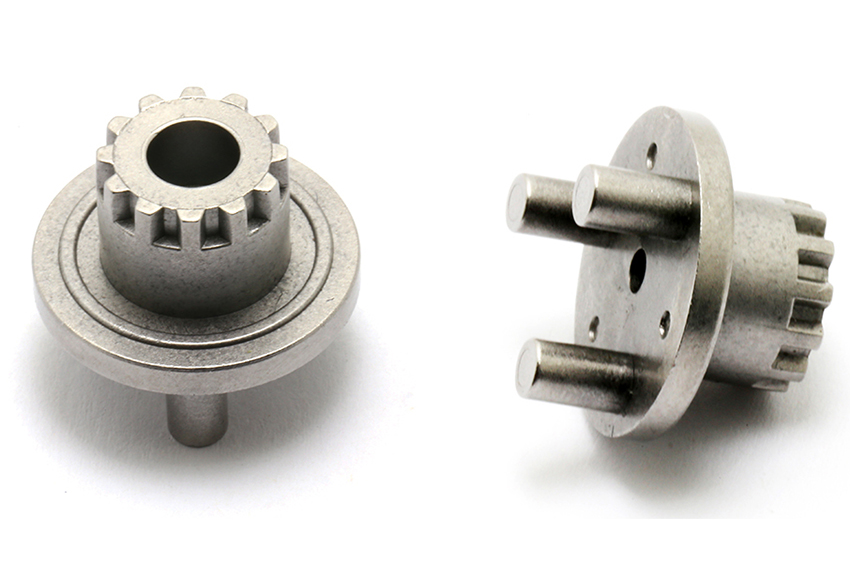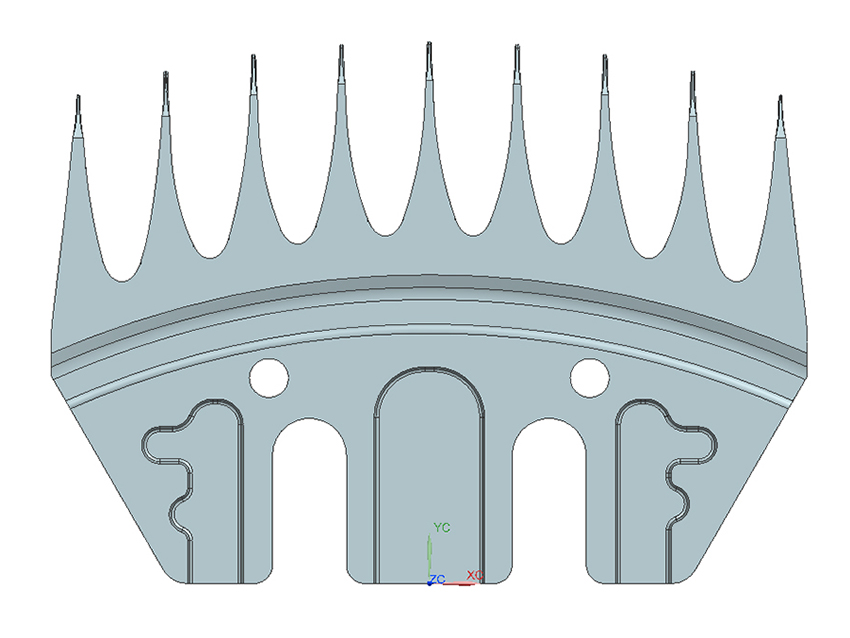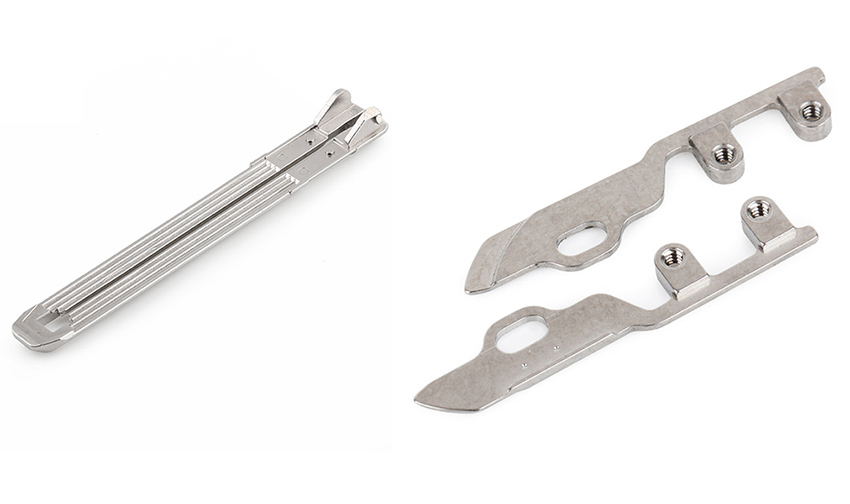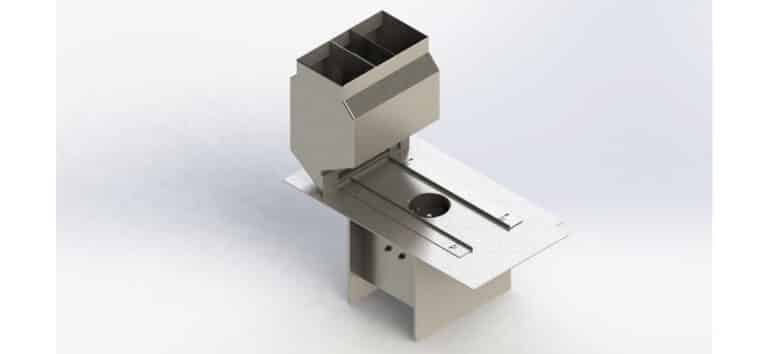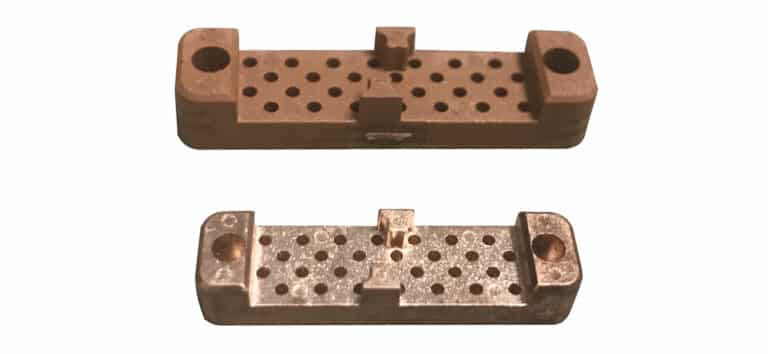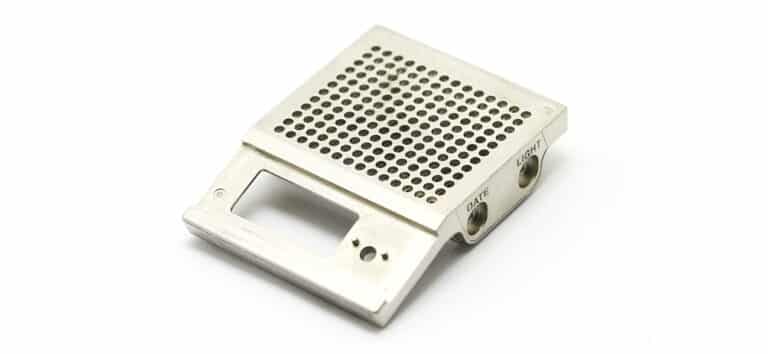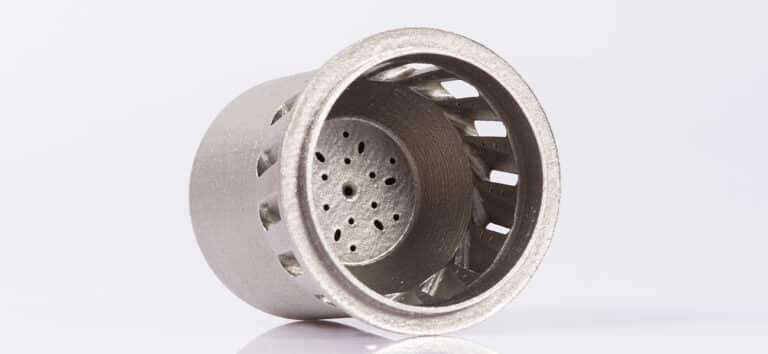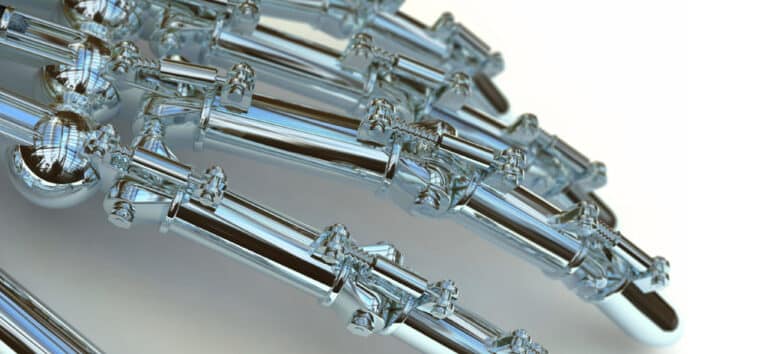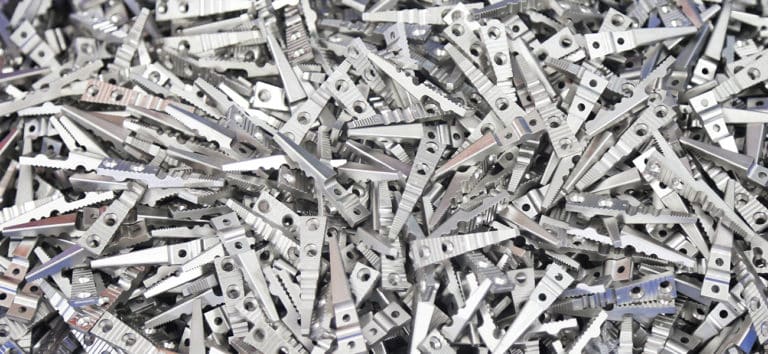Stainless Steel MIM
Introduction
Stainless steels are the most common alloys in Metal Injection Molding (MIM), due to their excellent corrosion resistance and weldability, good mechanical properties. The typical applications are consumer products, spectacle frame parts, automotive components, electronic equipment, dental and medical devices.
Comparing to other shaping and forming process (CNC machining, investment casting, die casting), MIM technology has advantages of achieving complex shapes with minimum materials wastes. However, the final mechanical properties of MIM stainless steels are influenced by the MIM processes. Particularly, the final density and grain size determine mechanical properties of MIM stainless steel significantly. Any defects in MIM process have the detrimental effect on final properties of stainless steel parts.
MIM SS316L
Stainless Steel Types
Stainless steel types has different chemical structures and compositions, all these factors determine the final properties and possible applications. Metal injection molding (MIM) technology can fabricate stainless steels with high density, enhance strength, ductility, and corrosion resistance. All these alloys include austenitic, ferritic, and precipitation hardening (PH) grades.
Austenitic Stainless Steel
Austenitic stainless steels have higher chromium content than other stainless steels, other chemical composition including: nitrogen, manganese, and nickel. All these elements make austenitic stainless steels highly resistant to corrosion. Different from martensitic steels, austenitic steels is weldable and non-magnetic typically, but not heat treatable. Cold work is the only possible hardening method.
SS304 MIM
Ferritic Stainless Steel
Ferritic stainless steels have high chromium content and low carbon content. This makes ferritic steels have less strength than martensitic steels, but higher corrosion resistance. Ferritic stainless steels are also magnetic and not heat-treatable, the only process is exclusively in annealing temper.
MIM SS430L
Ferritic stainless steel combines good magnetic response and some corrosion resistance.
Martensitic Stainless Steel
Martensitic stainless steels have 10.5-18% chromium and maximum 1.2% carbon, the body-centered crystal structure results in high strength, hardness and wear resistance. This grade stainless steel are not as corrosion resistant as other stainless steels, but better than carbon steels.
MIM SS420
MIM SS440C
Precipitaion Hardening Stainless Steel
Precipitation hardened (PH) stainless steels have composition of copper, molybdenum, aluminium and titanium with different combinations. These metals have 3-4 times strength than austenitic stainless steel with a relatively low toughness. Since the unique strength and good formability, PH stainless steels are applied in industry like: aerospace, oil and gas, and nuclear industries.
MIM SS17-4
Precipitation hardened (PH) stainless steels have composition of copper, molybdenum, aluminium and titanium with different combinations. These metals have 3-4 times strength than austenitic stainless steel with a relatively low toughness. Since the unique strength and good formability, PH stainless steels are applied in industry like: aerospace, oil and gas, and nuclear industries.
MIM Influence in Properties
Binder/Debinding Effects
Stainless steel powders can be applied with many binder system, MIM binders commonly rely on 60% filler, 30% backbone and 10% surfactant. Common filler phases are paraffin wax, polyethylene glycol, polyoxymethylene. Backbone polymers are polypropylene, polyethylene, ethylene vinyl acetate, or polymethyl methacrylate. Common surfactant/lubricant/plasticiser are stearic acid, palm oil, beewax, glycerin. As carbon has profound effects on sintered properties of stainless steel, binder ingredients with carbon residue are generally avoided.
Debinding has influence on properties as it increases the carbon or oxygen level in stainless steel. High oxygen level in binders system will result in almost 10% property loss (0.23% oxygen vs 0.02% oxygen). Moreover, residual oxygen will degrade corrosion resistance.
Densities
In MIM technology, the common densities of stainless steels will reach more than 94% of theoretical. The final densities are affected by the condition of binder composition in feedstock, debinding and sintering process. Comparing to cold rolling process, low sintered densities have disadvantages in terms of mechanical properties.
UTS (Ultimate Tensile Strength)
The UTS value of stainless steels are lower than the tensile strength of cold-rolled materials, like 316L, 304. The primary causes of reduced UTS are:
- Reduction of area where stress apply.
- Polygonal pores result in the notch effect with early material failure.
Elongation (Ductility)
Stainless steels in MIM have considerable increase compared to cold-rolled materials, and even higher than the hot-rolled. The elongation and ductility of stainless steel in MIM process will increase as porosity decrease with higher sintering temperatures. However, excessively high temperatures in sintering will result in lower ductility, due to abnormal grain growth and the precipitation of carbides in the grain boundary.
Fatigue
MIM stainless steels can achieve at 80% of maximum tensile strength, this is lower than cold-rolled stainless steel.
Stainless Steel Powder
Normally, there are three typical powders in MIM 17-4PH, prealloy powder, mixed powder, mater alloy powder.
- Prealloy powder is a micro-casting particle with the same composition.
- Mixed powder is a combination of iron, chromium, nickel and other particles with each single elements.
- Master alloy powder is a hybrid of small carbonyl iron powder and alloy powder. Alloy powder has concentrated additives with key elements in 17-4 PH (51% Cr, 12% Cu, 12% Ni, 24% Fe, 0.7% Nb).
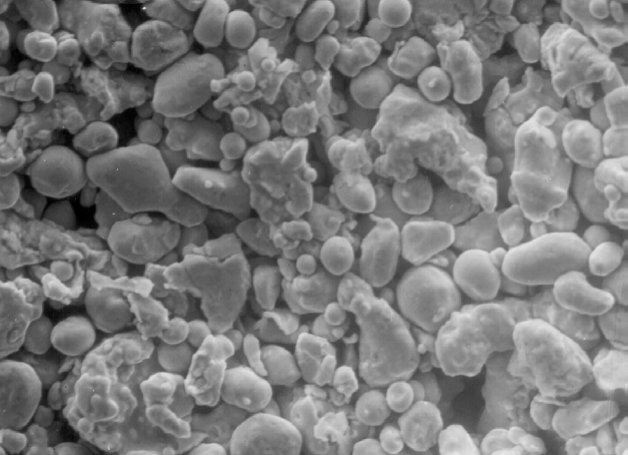
SS17-4 Water Atomization
Prealloy powder is favored for high performance, while master alloy is favored for low cost. Mixed elemental powder requires prolong sintering to achieve competitive properties.
Prealloyed powder has two main manufacturing method: gas atomizing, water atomizing. Water atomized powder has higher oxygen content as molten metal exposure to high pressure water. Gas atomized powder has spherical shape, it can provide high packing density and goog flow properties. Please check the micro-graph of spherical gas atomized and liga-mental water atomized powder of Stainless Steel 17-4 PH with nominal particle size of 20 µm.
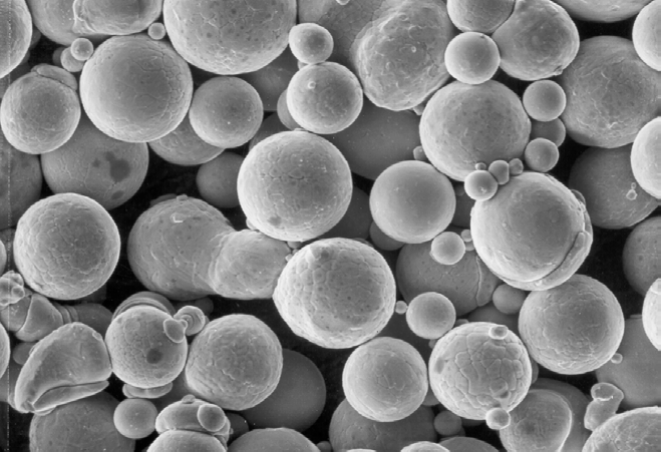
SS17-4 Gas Atomization
In Metal Injection Molding (MIM) process, the solids loading for gas atomized powder is 62.5 vol.%, while 55 vol.% for water atomized powder.
Conclusion
Stainless Steels are the most common metal in MIM industry. ZCMIM has more than 15 years of experience in different grades of stainless steel. We can apply various stainless steels in every MIM project for required applications. Contact us for your next stainless steel MIM project.
